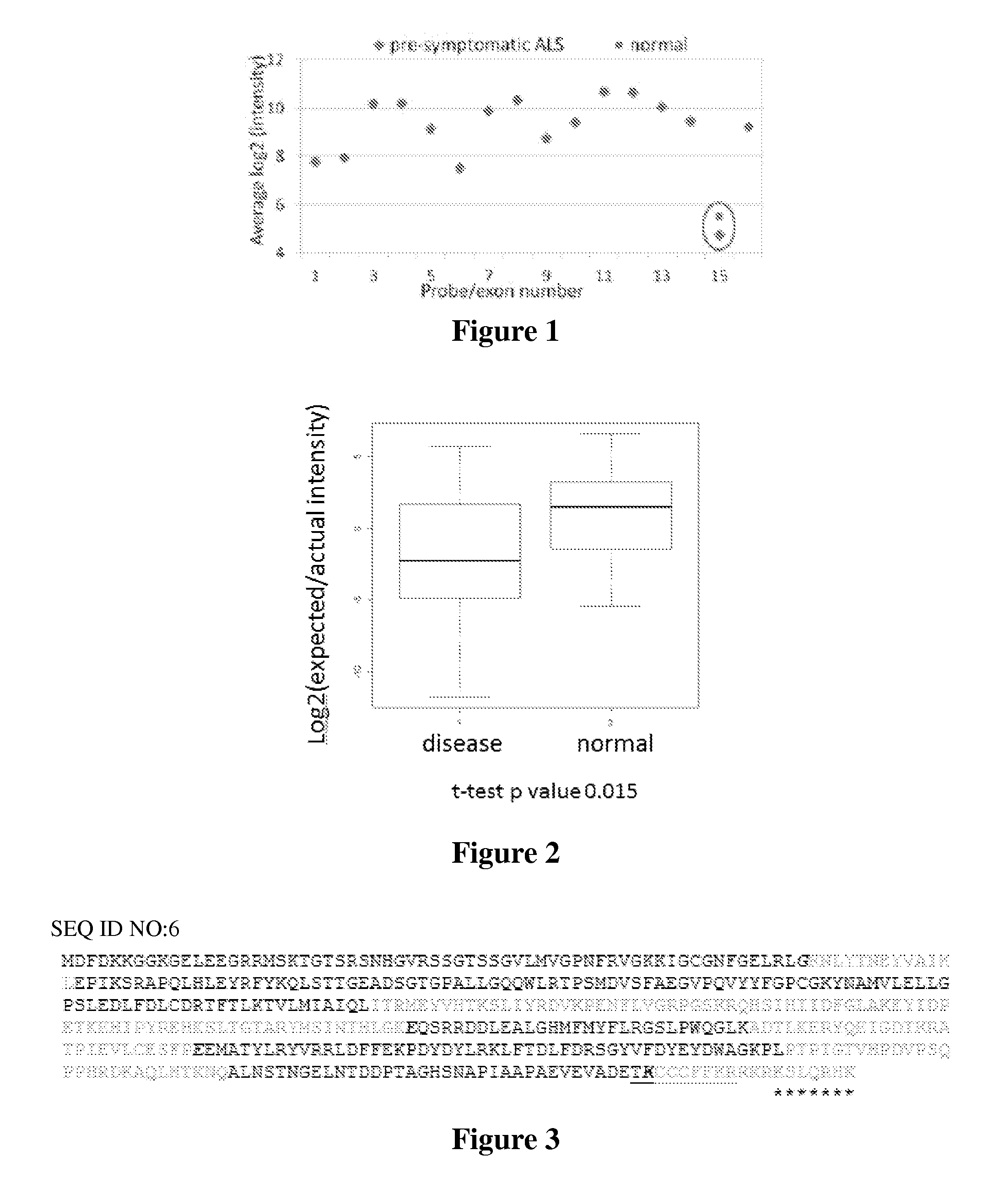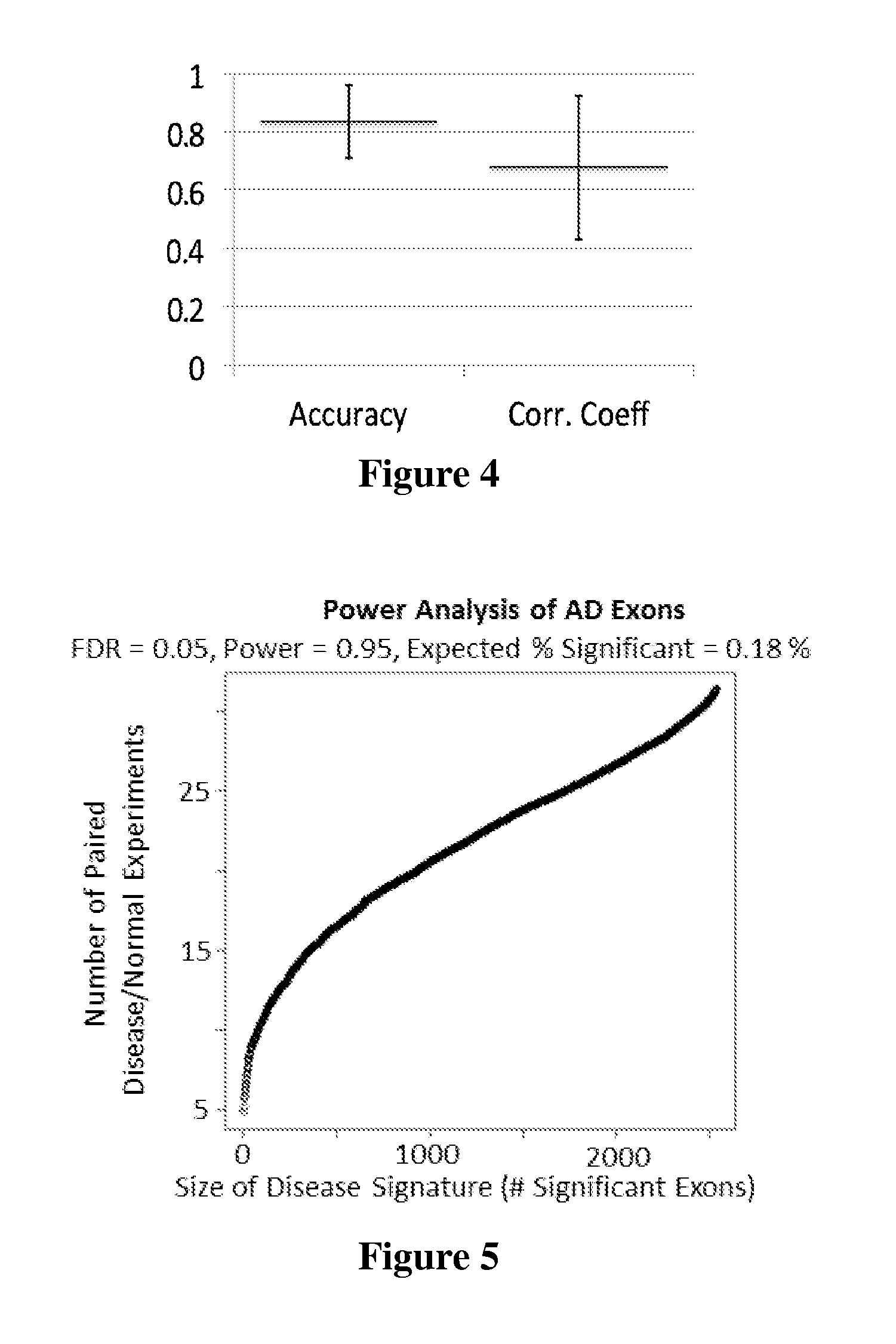Markers for amyotrophic lateral sclerosis (ALS) and presymptomatic alzheimer's disease (PSAD)
a technology of amyotrophic lateral sclerosis and presymptomatic alzheimer's disease, which is applied in the field of finding diagnostic assays for serious illnesses, can solve the problems of paralysis and ultimately death, unreliability of existing assays for direct detection of psad from serum, and complex current diagnosis
- Summary
- Abstract
- Description
- Claims
- Application Information
AI Technical Summary
Benefits of technology
Problems solved by technology
Method used
Image
Examples
example 1
Detection of an ALS Marker
[0029]The ALS signature in serum of mice developing ALS was determined using motor neurons as detector cells as described in US2012 / 0245048. Motor neurons have been shown to be targeted by the disease in a non-small cell autonomous manner (Nagai, M, et al., Nature Neuroscience (2007) 10:615-622), and therefore are responsive to disease-specific signatures in serum.
[0030]In one experiment, as set forth in the above-mentioned publication, disease serum was taken from 5 transgenic ALS susceptible mice (SOD1; G93A) at 9 weeks of age and control serum was taken from 5 non-carrier mice of the same age from the same colony.
[0031]Spinal motor neurons (MNs) were derived from HGB3 embryonic stem cells expressing a fluorescently labeled motor neuron marker (HB9-eGFP) by a method previously described (Wichterle, H., et al., Cell (2002) 110:385-397) as described below. Unless otherwise specified, growth of ES cells was in differentiation medium (consisting of equal part...
example 2
Alzheimer's Assay
[0047]A mix of iPSC-derived glutamatergic and GABAergic neurons (from Cellular Dynamics International) were plated in a 12-well dish (at 600,000 cells / well) and cultured for 5 days. Cells were then exposed to 5% plasma from 4 cognitively normal controls, and 4 patients with confirmed mild cognitive impairment (MCI) for 24 h and RNA was isolated and used for gene expression analysis using Affymetrix® human exon arrays (ST 1.0). The data were merged, normalized, and filtered to include only ˜207,000 of the ˜1.4 M exons on the array that were significantly detected above background (DABG <0.01) for either all of the normal or all of the early symptomatic AD (PSAD) experiments. A t-test was performed on individual exons (i.e., without multiple test correction) and revealed significant differential splicing of 2,537 exons (p-value <0.05) in response to early symptomatic AD versus normal plasma.
[0048]The exons in the disease signature correspond to 2,234 genes. Because AD...
PUM
| Property | Measurement | Unit |
|---|---|---|
| Biological properties | aaaaa | aaaaa |
Abstract
Description
Claims
Application Information
 Login to View More
Login to View More - R&D
- Intellectual Property
- Life Sciences
- Materials
- Tech Scout
- Unparalleled Data Quality
- Higher Quality Content
- 60% Fewer Hallucinations
Browse by: Latest US Patents, China's latest patents, Technical Efficacy Thesaurus, Application Domain, Technology Topic, Popular Technical Reports.
© 2025 PatSnap. All rights reserved.Legal|Privacy policy|Modern Slavery Act Transparency Statement|Sitemap|About US| Contact US: help@patsnap.com


